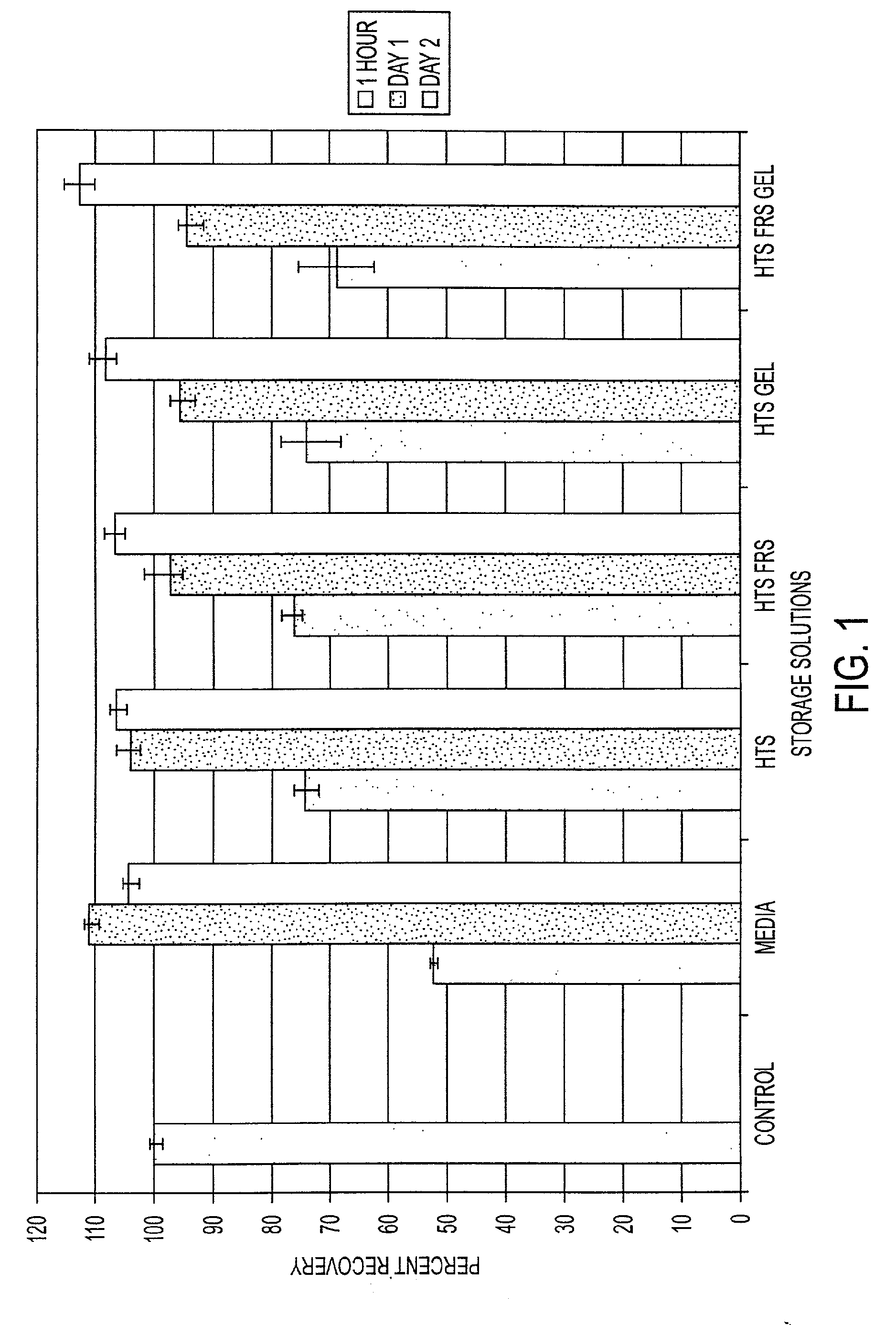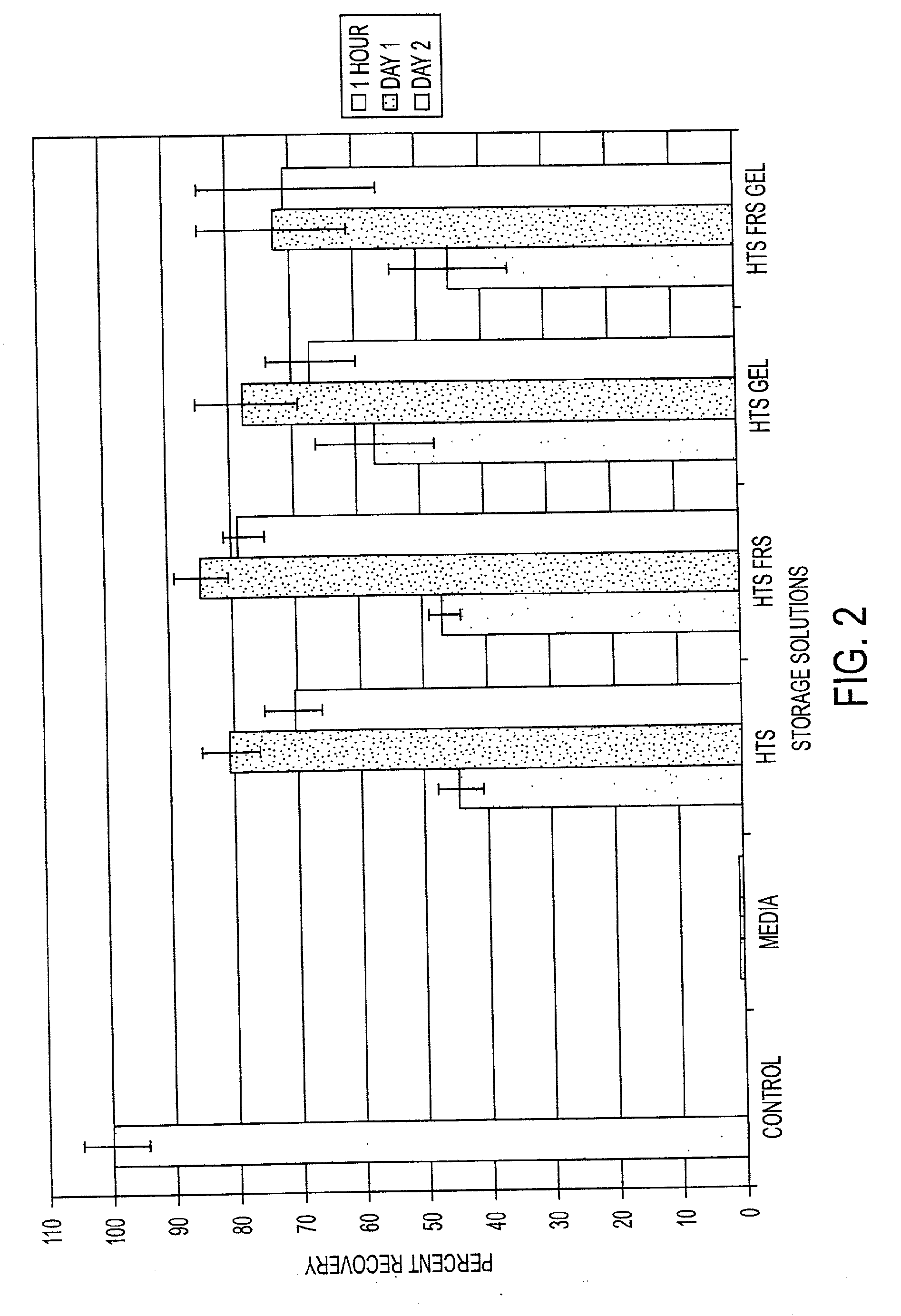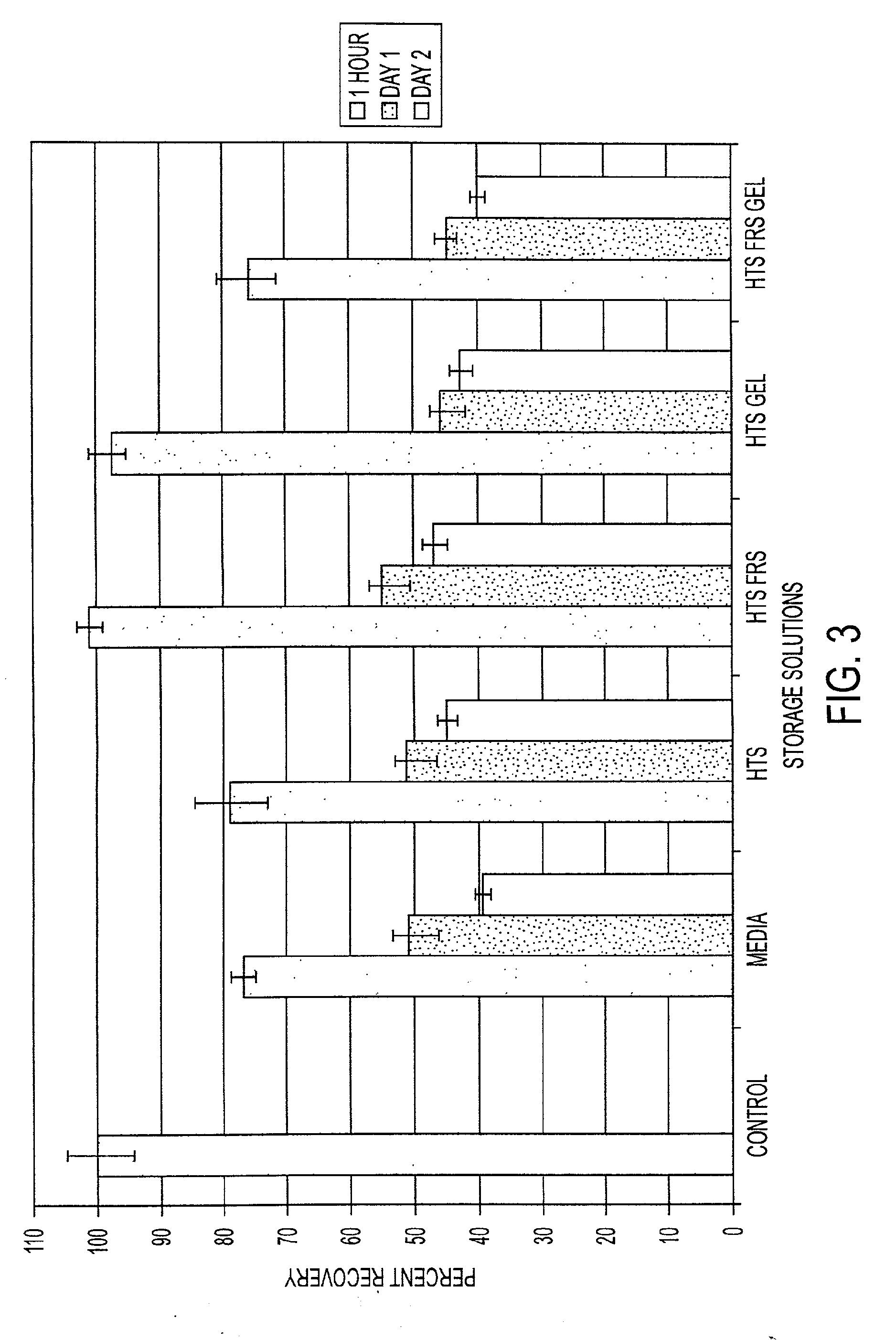Methods and Compositions for the Control of Molecular-Based Cell Death During Preservation of Cells, Tissues or Organs in a Gel-Like State
a cell death and molecular-based technology, applied in the field of gel-like state preservation of cells, tissues or organs, can solve the problems of significant cellular death initiated during and following, limited success rate, and numerous physical stresses on biologics, and achieve the effect of preventing apoptotic cell death
- Summary
- Abstract
- Description
- Claims
- Application Information
AI Technical Summary
Benefits of technology
Problems solved by technology
Method used
Image
Examples
example 1
[0055] Gel-Based Medium Preparation
[0056] Calculations are first performed to determine the necessary volume of gel-based medium for a given storage or transport need. The desired gel concentration must be established. Typically, a standard concentration of 2% is used, although this concentration may vary depending upon the characteristics of the biologic being preserved. A stock solution of gel-based medium was then prepared (standard=14%) in a sterile environment. The volume of stock solution needed was determined and the mass of the appropriate amount of gelatin powder (Sigma Chemicals, St. Louis, Mo., USA) was ascertained. The appropriate volume of organ preservation solution (Hypothermosol®, or “HTS”) was measured and combined via agitation with the gelatin powder. In this instance, the stock solution was mixed by swirling the container having the HTS and gelatin, although any suitable means of agitation may be employed. The stock solution of gel-based medium was then warmed i...
example 2
[0057] Gel-Based Medium Storage Protocol
[0058] Aliquots of previously prepared 2% gel-based medium were removed from 4° C. storage and placed into a 37° C. water bath for 15 minutes to melt the gelatin. While the gel-based medium was warming, samples destined for preservation were prepared in a sterile environment. The desired number of cells to be preserved was transferred into a clean centrifuge tube and was gently centrifuged to pellet cells. Typically, centrifugation at 500×g for 6 min is sufficient to generate a cell pellet from which a supernatant can be decanted. Pelleted cells were then suspended in 0.5-1.0 ml of HTS-FRS solution without gelatin, which is an appropriate volume for preservation in 2% gel-based HTS-FRS medium. The warmed 2% gel-based medium, now in solution form, was removed from the water bath and the suspended cells were pipetted into the warmed medium in a sterile cell culture environment. After tightly securing lids onto the sample storage tubes, the tube...
PUM
 Login to View More
Login to View More Abstract
Description
Claims
Application Information
 Login to View More
Login to View More - R&D
- Intellectual Property
- Life Sciences
- Materials
- Tech Scout
- Unparalleled Data Quality
- Higher Quality Content
- 60% Fewer Hallucinations
Browse by: Latest US Patents, China's latest patents, Technical Efficacy Thesaurus, Application Domain, Technology Topic, Popular Technical Reports.
© 2025 PatSnap. All rights reserved.Legal|Privacy policy|Modern Slavery Act Transparency Statement|Sitemap|About US| Contact US: help@patsnap.com



